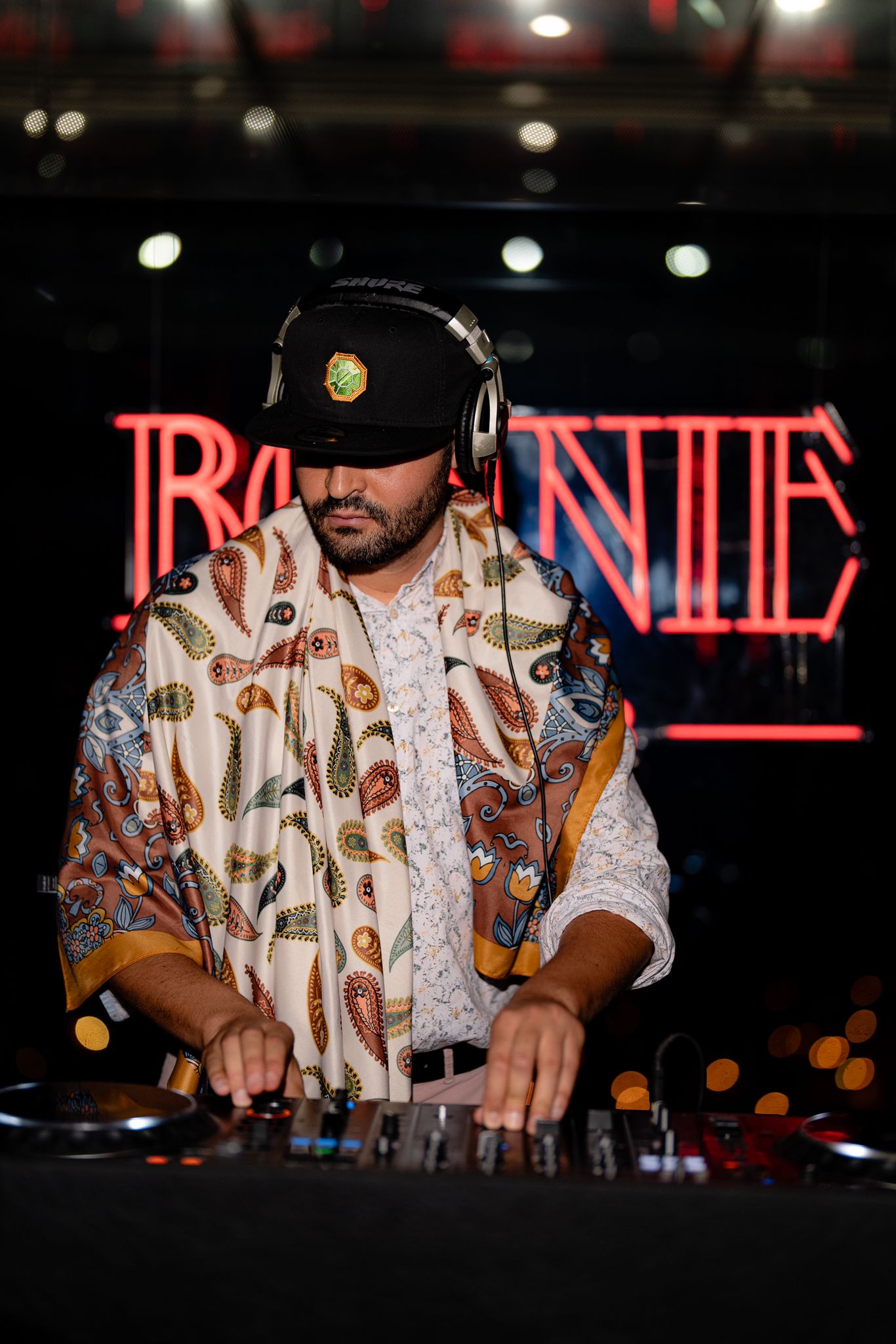Koceila Chougar
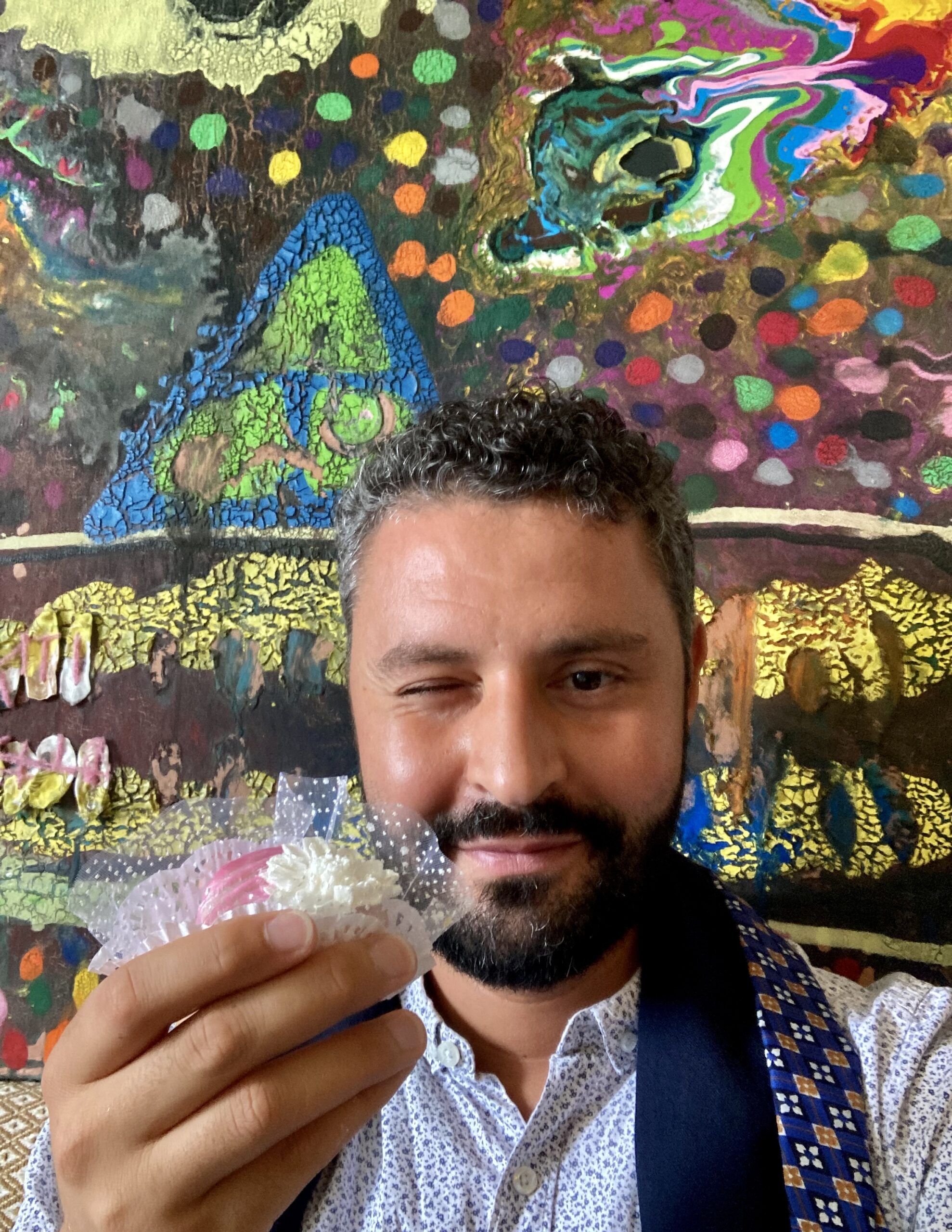
There’s a powerful philosophical narrative in the conversation with Koceila, as he draws emphasis to the unconscious powers he feels that overwhelm him when he paints. He describes it as an urge, an urge to express himself, the enveloping history of his roots, the city Tizi-Ouzou in Algeria where he was born, that takes hold in the multifaceted language in his work. He highlights the Amazigh culture, indigenous to North Africa long before the invasion of the Ottomans. It’s a fascinating piece of history, as accounts of the Amazigh are rare, in Tamazight, the language spoken by Amazighs, the word Imazighen is the plural form, meaning ‘free people’. This culture is stamped as an identity within Koceila’s work. However, the paintings additionally transcend a modern ideology of neo-expressionism, the revolution against concept art and minimalist art. The powerful brushstrokes and applied paints are both energetic and forceful. Koceila’s artworks evoke emotive symbolisms taking the heritage of the mysticism surrounding the ancient culture of his Algerian heritage, enveloped with his modern understanding of the world, having lived in Monaco, Paris and now Bordeaux in France. There is a nostalgia, reminiscent of historical Amazigh potteries and frescoes and current urban street art, with hints of that compact Jean Basquiat style of symbolisms, the abstract expressionism of Jackson Pollock, or the art brut of a Dubuffet, with a suggestion of a fractured reality, with various objects. Then there are those eyes, their presence appearing like clues mystical and otherworldly, like the eyes on the feathers of a peacock, the unintentional or intentional oddity of nature.
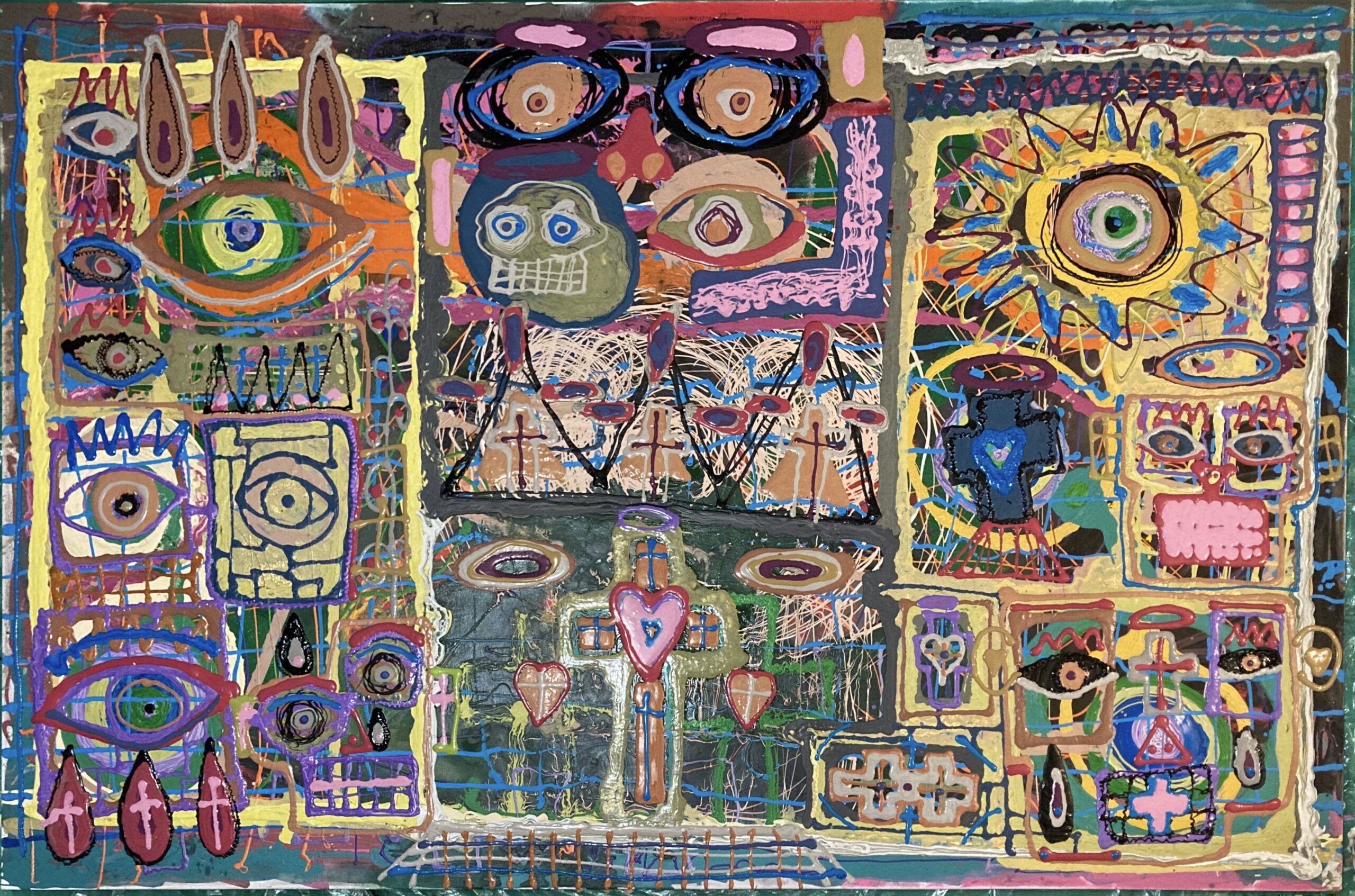

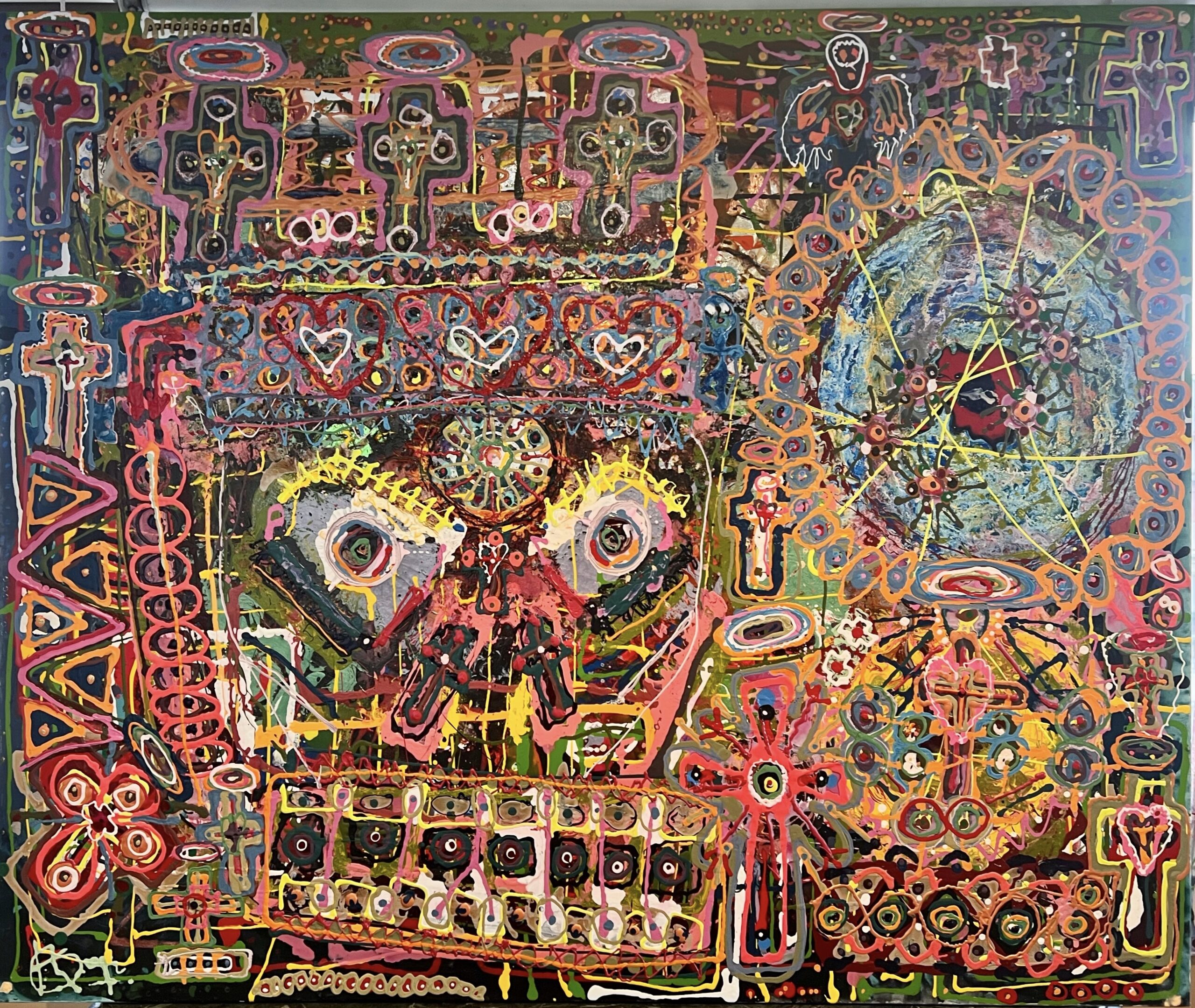
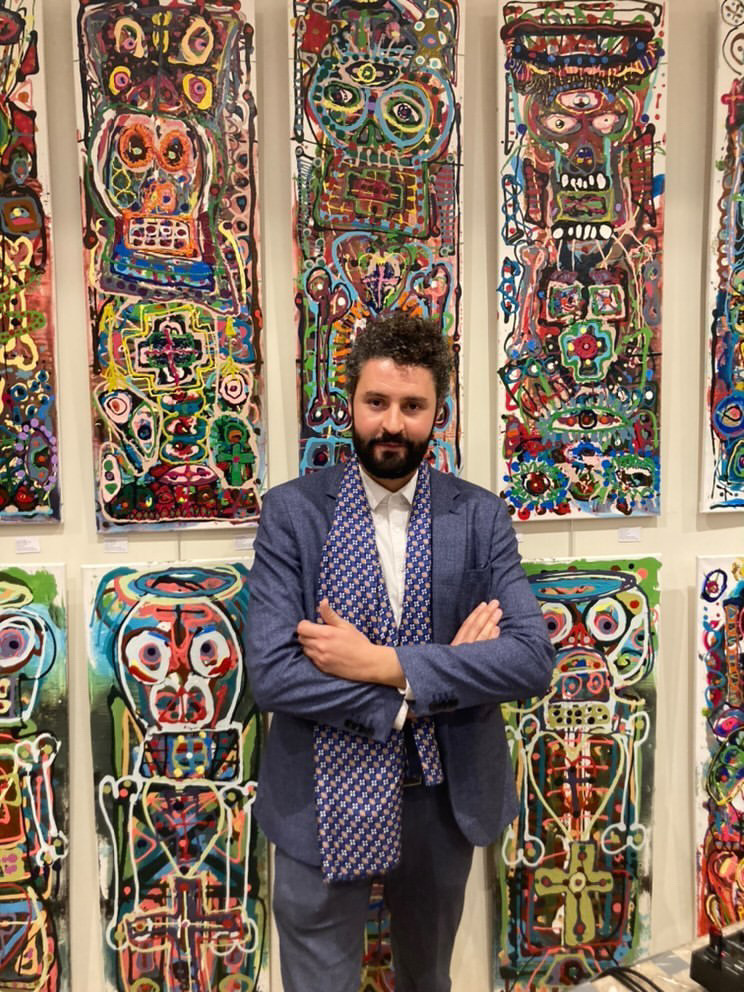
A highly informed man, who has worked alongside the successors of legendary artists, including Warhol, we chat about all the topics he knows best, Koceila has delved into the art world, not only as an art dealer, avid collector himself, or his knowledge of NFT’s along with his work as a DJ and musician but also as a businessman. Having recently taken to the paint brush; it was just eight years ago when he applied his feelings to the canvas, he was painting for himself, he tells me. However, when a collector who happened to pop by for a visit, was so enamoured with his work, they wanted to buy all of them. Koceila describes how surprised he was, and then explains how hard it was to sell all of them all because he enjoyed painting for himself, it was like clearing his soul. He was born into a family of creators he tells me, people, who loved culture, and all those colours and sounds that he feels and sees when he paints. They are impressed into our subconscious, art is a connection between us and our routes, he emphasises. Currently Koceila is talking to the large galleries “They are all crazy” he tells me, “but they are huge” he exclaims. As an art dealer himself, he realises that real collectors are looking for real creative intention. “People are bored with fake art” he claims and explains how he feels the future with pop art appears to be done.
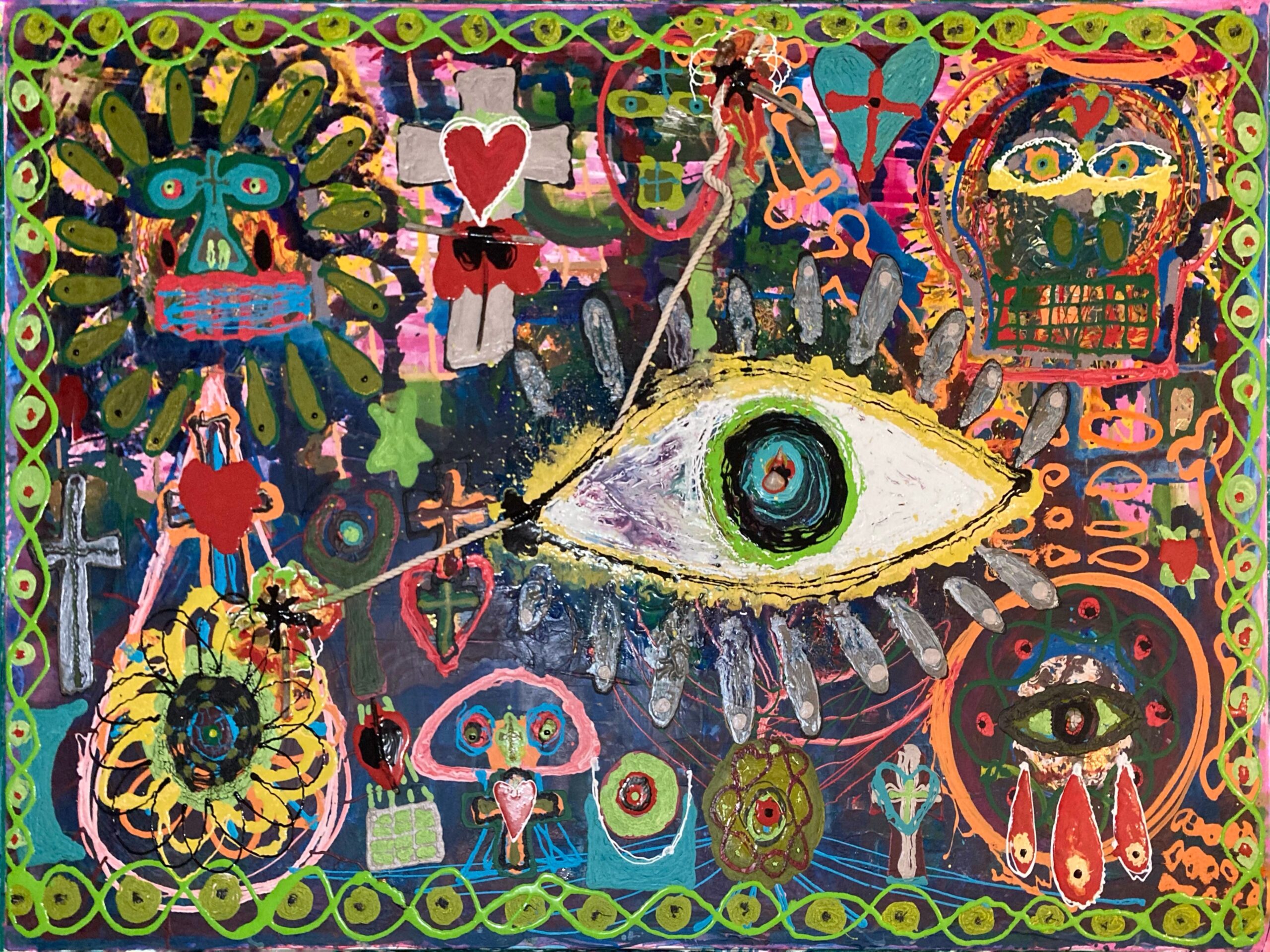
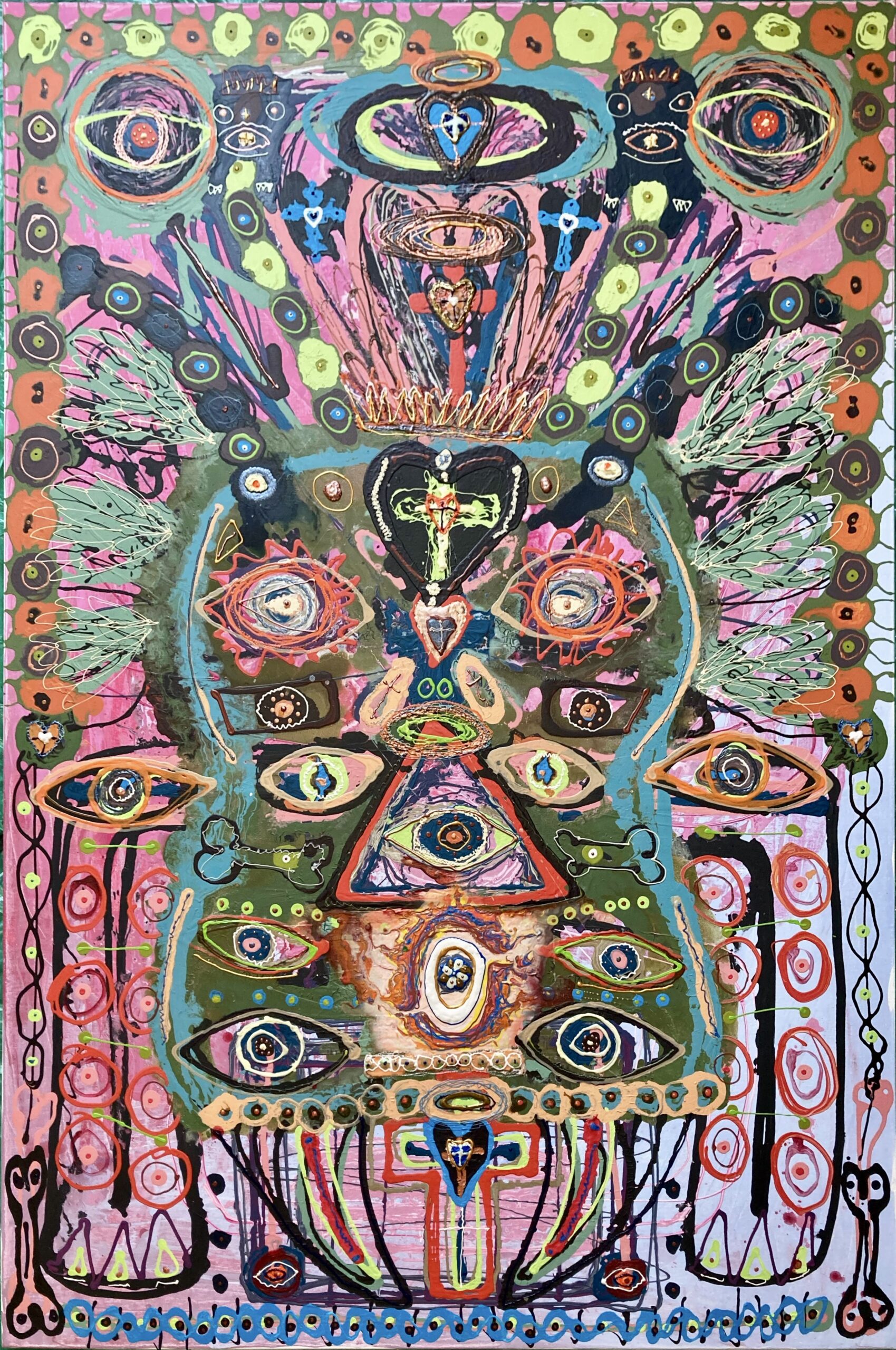
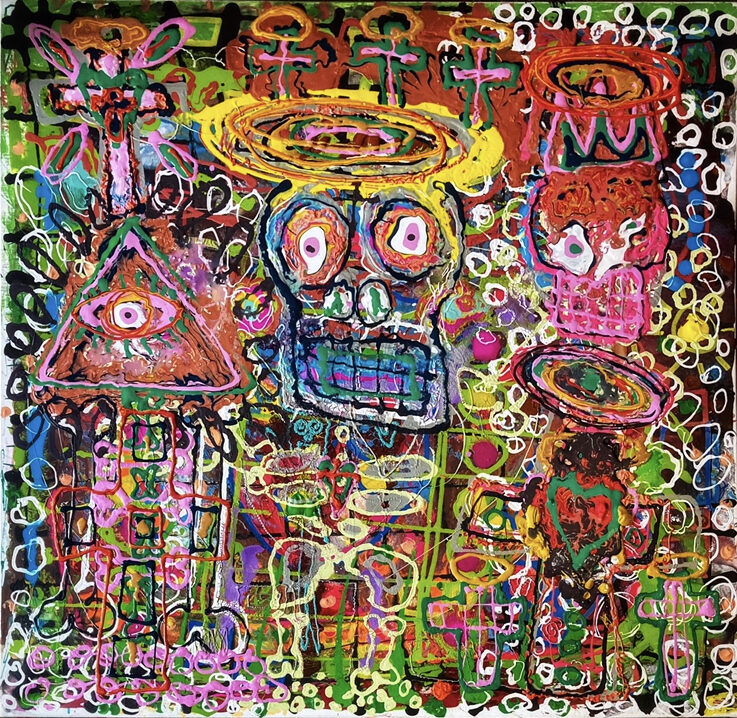
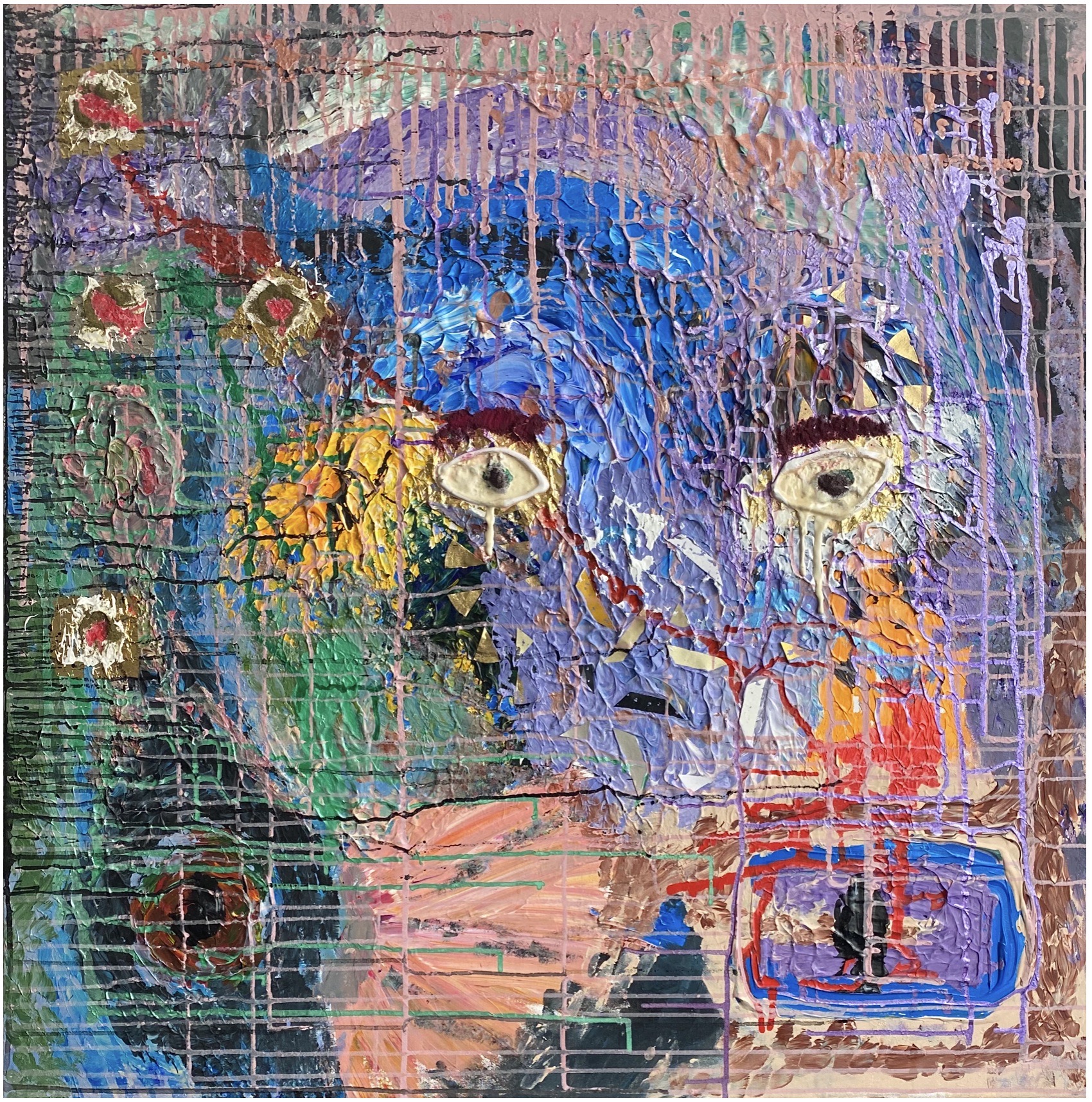
We talk about what or who inspires him, he describes the new generation of artists, they make music and make art, and he explains how artists need to be connected with themselves. It’s also a business, you need to be able to write, and you need to have so many skills. People are bored with fake art, and we move into the subject of NFTs. Koceila recounts how a few months before the hype of NFTs, he had predicted a meme could be a piece of art. Now they are selling memes for many millions, he tells me. The new generation knows more about memes. “People are crazy on the internet,” and how these memes have become NFTs and how they have learnt to monetise the troll. “They made bullshit and earned money from it.” Then they started to create strong beautiful projects. Koceila, tells me how he does not really believe in NFTs, describing how there will be a different type of NFT. You can create and go into digital art, “Digital art is a deep thing” NFTs are something different he clarifies, “it is technology, it is not art”. Andy Warhol made the first digital art, he claims and explains how all the NFTs are now crashing. With that, Koceila gives a fascinating, depiction of the art world as he sees it, he describes how people need to take care of an artist’s legacy when they have deceased, he expounds how Dali’s value has started crashing, he has no family he explains; whereas Picasso’s family is huge, and Leonardo da Vinci, it’s the Vatican who take care of his legacy.

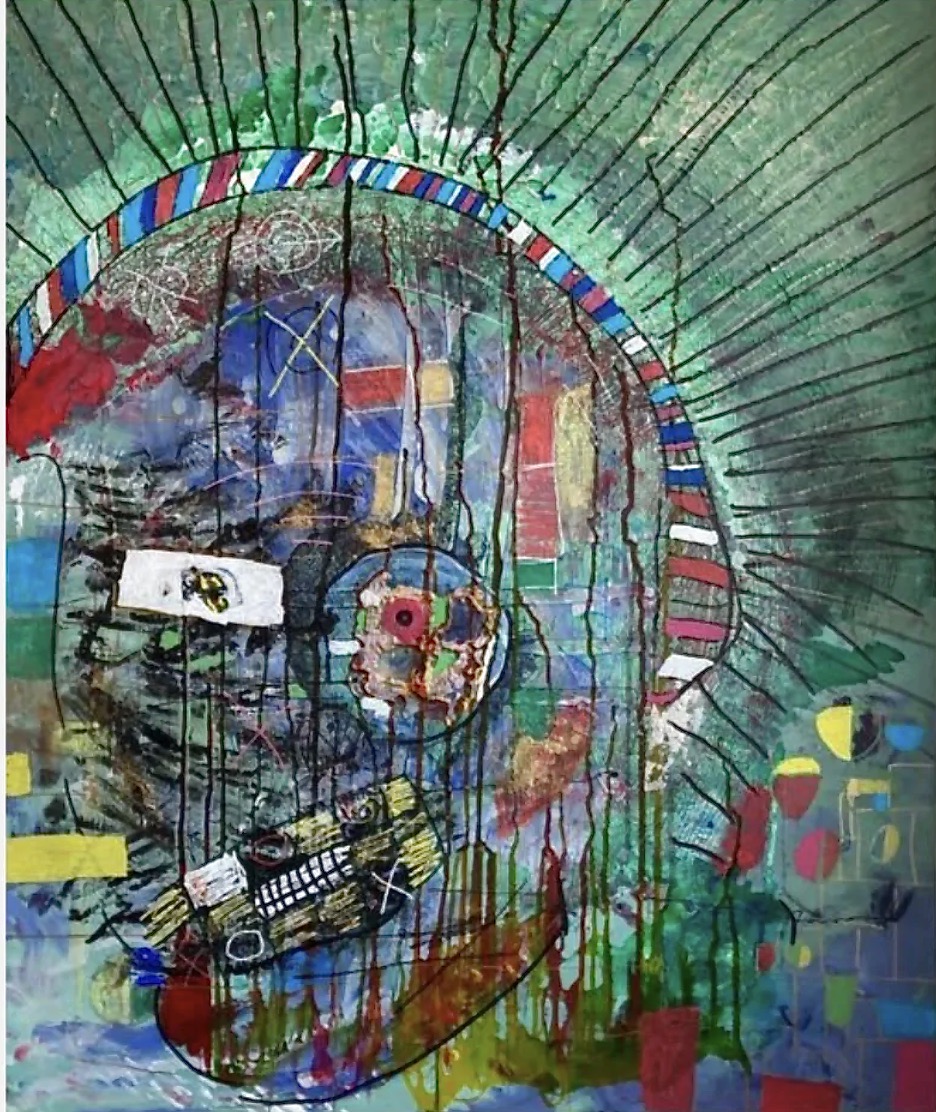

Now as an artist himself, Koceila spends all his time in the studio, making art, and he makes music when he feels inspired, when his inspiration comes, he may feel he is being selfish, “I may leave the dinner table”, and his wife may challenge him but he will explain to her that the inspiration takes a precedence, he is a good businessman but he feels and knows that at this juncture of his life, he needs to create, and that it is the music and painting. We talk about what he is currently working on, and he briefly mentions his music before he delves into how he is heading into a different direction with his artworks. Creating with different objects, and collecting shells and innate objects, he defines his work using an analogy to couture. He has an idea and it becomes a kind of obsession he explains, he needs to make it, and everything is so dirty “it’s fantastic”. The essence of his narrative is important to him, maybe it’s not an invented story, and he gives reference to what he defines as his dirty paintings. The story is built in, “The story is the art, the art is the story” he elaborates that he is trying to escape all the stories because all the stories are trying to catch him. Then he emphasises the way a narrative is built into the artwork and new people identify with it. That the collectors appreciate “The art that hangs on the borderline”. Then I asked Koceila what he considers perfection, he pauses for a second and what is almost a sigh answers “When everything is done.”
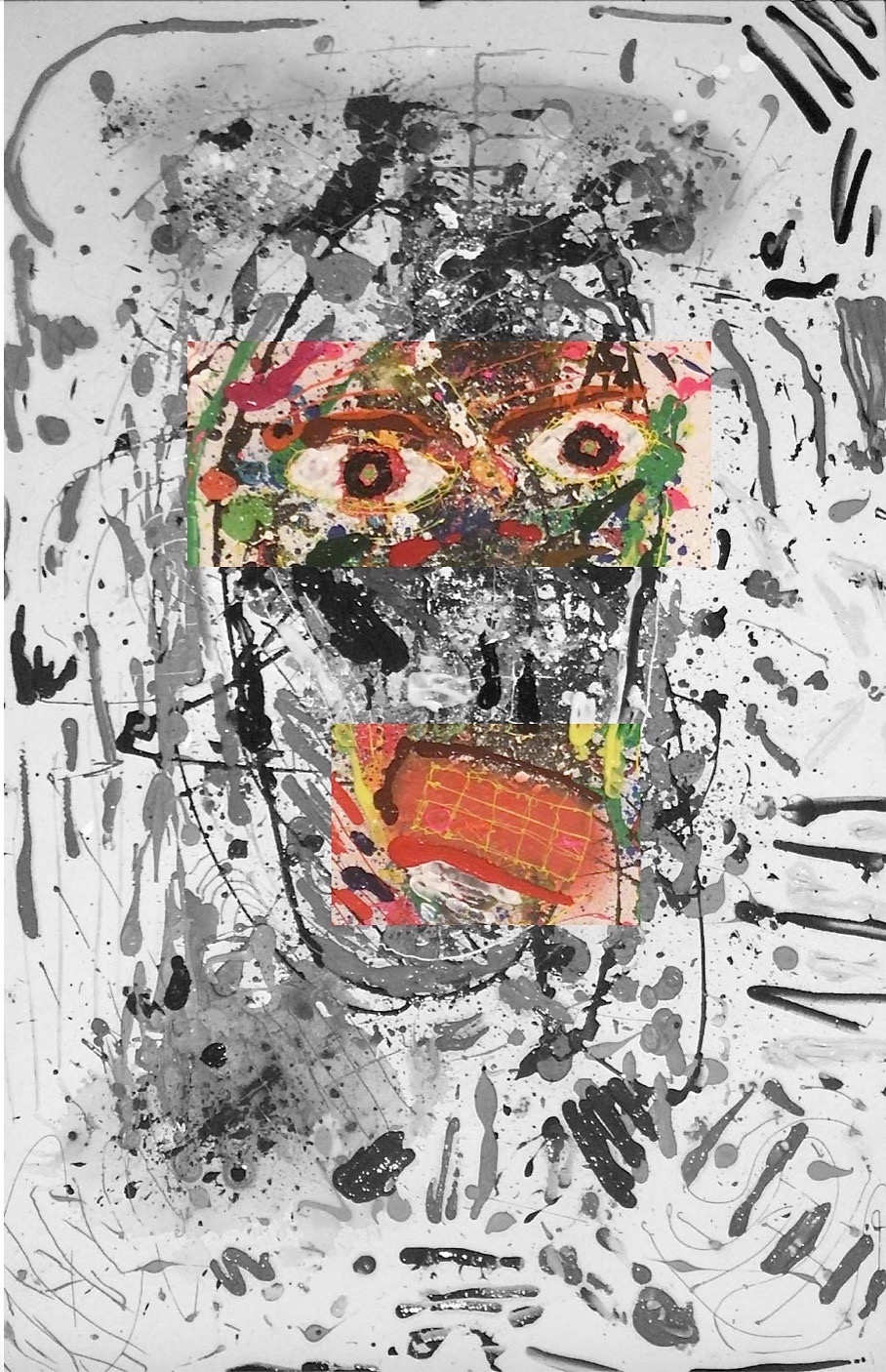
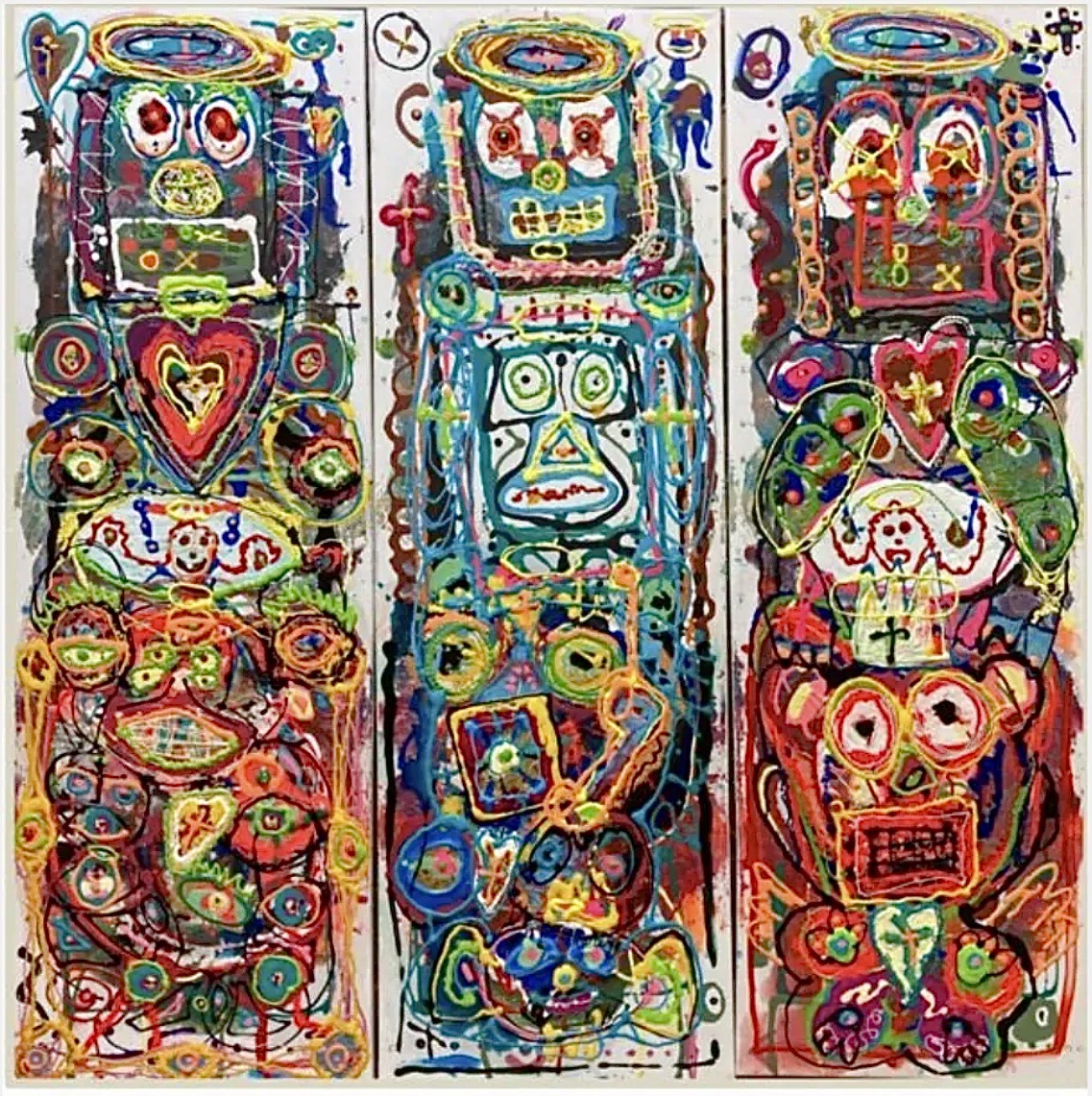
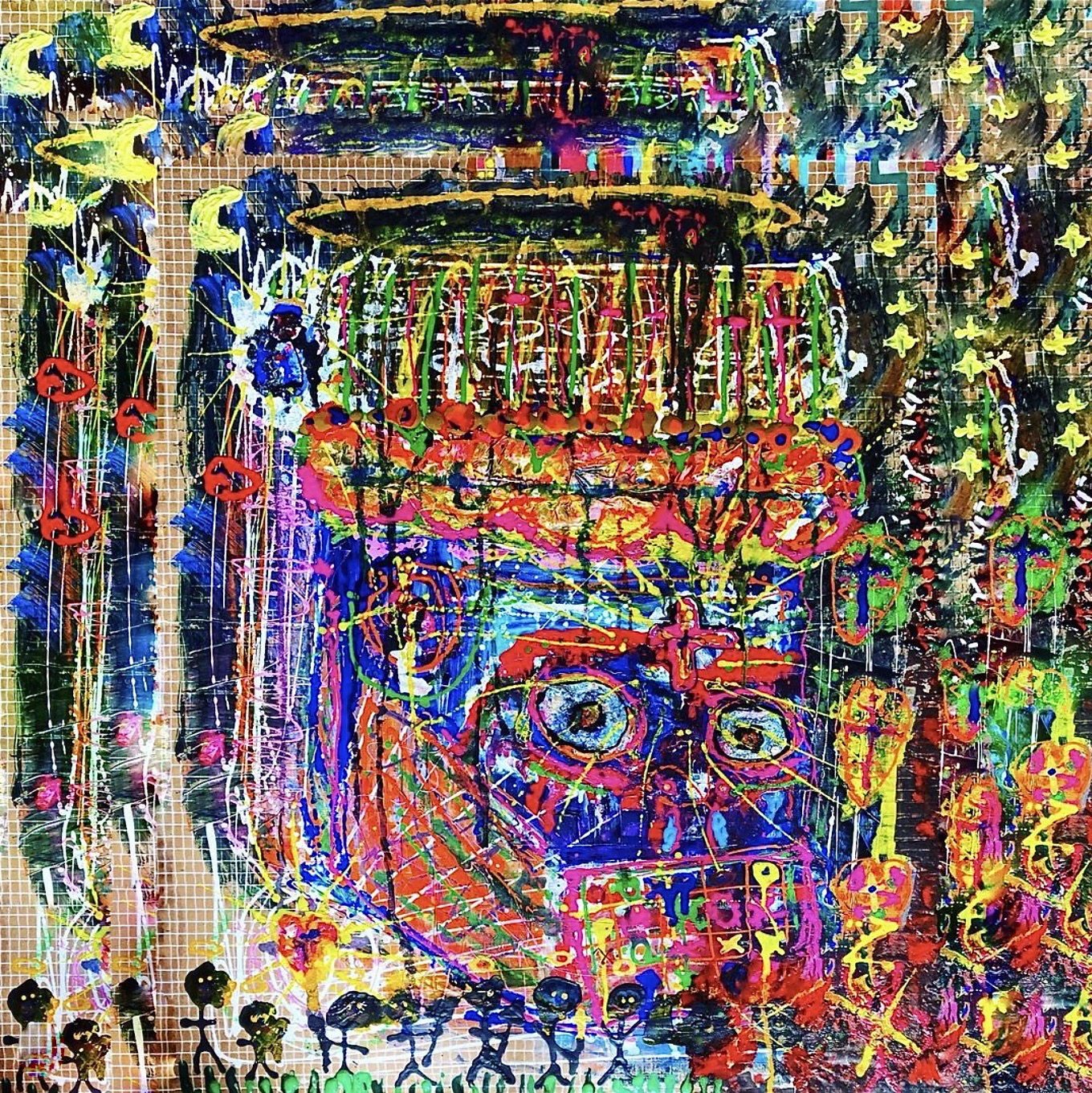
As a man whose roots are from Northern Africa, he sees how the world is connected to the roots of Africa, and the appreciation of artists like Picasso, whose works were inspired by the art from this continent. He shows me a figurative abstract sculpture, many visitors who have come to his home often think it is a Picasso, when in fact he bought it in Algeria. He describes the crazy hype around African art as people are looking more to connect to their roots. I asked Koceila what he considers the best and the worst in the art world, “The worst, is trying to explain what art is,” the best, he smiles “Trying to understand what is art”. It is interesting how the questions and answers in our conversation merge, when I asked him if he could have any artwork, Koceila pauses for a minute then tells me Salvator Mondi, by Leonardo da Vinci, the painting fetching a staggering GBP 357.7 million (USD 450.3 million). Koceila touches on the paradox of humanity, when he recollects the message of Jesus in the scriptures, that we should not make money our god, yet the dualism and paradox as a painting depicting Jesus is the most expensive painting ever sold.
Interview: Antoinette Haselhorst
